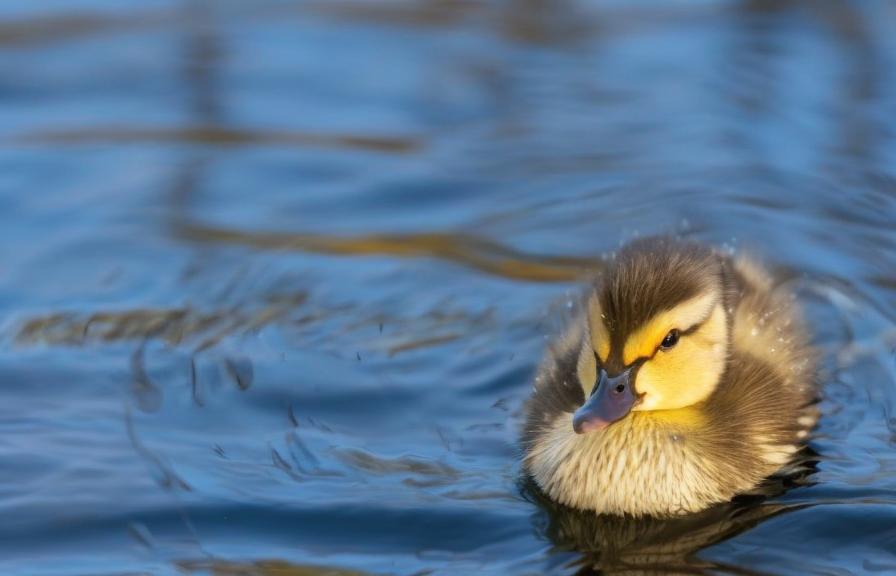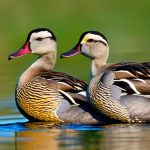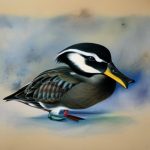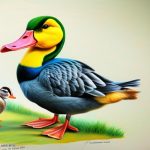Colour breeding in domestic ducks is a fascinating and intricate process that involves selectively breeding ducks to produce specific colour variations. This practice has been around for centuries and has resulted in a wide array of stunning and unique duck breeds with vibrant and diverse plumage. Colour breeding is not only a hobby for many duck enthusiasts, but it also plays a significant role in conservation efforts and the preservation of rare and endangered duck breeds. Through careful selection and breeding, breeders can create ducks with a wide range of colours, patterns, and markings, making each breed distinct and visually appealing.
Colour breeding in domestic ducks is a complex art that requires a deep understanding of genetics, breeding techniques, and the specific traits associated with different colours. It involves careful planning, observation, and patience to achieve the desired colour variations. Additionally, ethical considerations and the welfare of the ducks are paramount in colour breeding practices. As the demand for unique and visually striking duck breeds continues to grow, colour breeding has become an important aspect of duck husbandry and conservation efforts. In this article, we will explore the history of colour breeding in domestic ducks, popular breeds for colour breeding, breeding techniques for colour variations, challenges and considerations in colour breeding, ethics and welfare in colour breeding, and future trends in colour breeding in domestic ducks.
Key Takeaways
- Colour breeding in domestic ducks involves selectively breeding ducks to produce specific colour variations in their plumage.
- The history of colour breeding in domestic ducks can be traced back to ancient times, with evidence of selective breeding for specific colours in various duck breeds.
- Popular breeds for colour breeding in domestic ducks include the Pekin, Indian Runner, and Khaki Campbell, among others.
- Breeding techniques for colour variations in domestic ducks involve careful selection of breeding pairs, genetic testing, and proper husbandry practices.
- Challenges and considerations in colour breeding include genetic health, maintaining breed standards, and ethical considerations for the welfare of the ducks.
- Ethics and welfare in colour breeding in domestic ducks involve ensuring the health and well-being of the ducks, avoiding inbreeding, and promoting natural behaviours.
- Future trends in colour breeding in domestic ducks may involve the development of new colour variations, genetic research, and a focus on sustainable breeding practices.
History of Colour Breeding in Domestic Ducks
The history of colour breeding in domestic ducks can be traced back to ancient times when humans first began domesticating wild ducks for their meat, eggs, and feathers. Over the centuries, selective breeding for specific traits, including colour variations, has led to the development of numerous distinct duck breeds with a wide range of plumage colours and patterns. The practice of colour breeding gained popularity during the Victorian era when duck enthusiasts began to breed ducks for ornamental purposes, resulting in the creation of many visually stunning and unique duck breeds.
In the early 20th century, the establishment of poultry and waterfowl breeding associations further fueled the interest in colour breeding, leading to the standardization of breed characteristics and the recognition of specific colour variations within different duck breeds. Today, colour breeding in domestic ducks continues to thrive as breeders strive to create new and exciting colour variations while also working to preserve rare and endangered duck breeds. The history of colour breeding in domestic ducks is a testament to the dedication and passion of duck enthusiasts who have worked tirelessly to create and preserve the diverse array of duck breeds that exist today.
Popular Breeds for Colour Breeding
Several duck breeds are particularly popular for colour breeding due to their genetic diversity and ability to produce a wide range of colour variations. One such breed is the Mallard duck, which serves as the ancestor of many domestic duck breeds and possesses a rich genetic pool that allows for the expression of various colours and patterns. The Mallard’s genetic diversity has made it a valuable resource for breeders looking to create new and unique colour variations in domestic ducks.
Another popular breed for colour breeding is the Indian Runner duck, known for its upright posture and distinctive egg-shaped body. Indian Runners come in a variety of colours, including black, white, fawn, and chocolate, making them an ideal choice for breeders looking to produce ducks with diverse plumage colours. The Khaki Campbell duck is also highly sought after for colour breeding due to its ability to produce a wide range of colours, including khaki, dark brown, and white. These popular breeds serve as the foundation for many colour breeding programs and have played a significant role in the development of new and exciting colour variations in domestic ducks.
Breeding Techniques for Colour Variations
Breeding techniques for colour variations in domestic ducks involve a deep understanding of genetics and the inheritance patterns of specific colour traits. Breeders must carefully select parent ducks with desired colour variations and consider the genetic makeup of each bird to predict the potential outcomes of their offspring. By understanding dominant and recessive genes, breeders can create breeding pairs that are likely to produce offspring with specific colour variations.
In addition to genetic selection, breeders may also use techniques such as line breeding and crossbreeding to introduce new colour variations or enhance existing ones. Line breeding involves mating closely related ducks to reinforce specific traits, while crossbreeding involves mating ducks from different genetic backgrounds to introduce new genetic diversity and potentially create new colour variations. These techniques require careful planning and observation to ensure that the desired colour variations are achieved while maintaining the overall health and welfare of the ducks.
Challenges and Considerations in Colour Breeding
Colour breeding in domestic ducks presents several challenges and considerations that breeders must carefully navigate. One of the primary challenges is maintaining genetic diversity while selectively breeding for specific colour variations. Inbreeding can lead to genetic defects and health issues in ducks, so breeders must carefully manage their breeding programs to avoid these potential pitfalls.
Another consideration is the potential impact of selective breeding on the overall health and welfare of the ducks. Breeding for specific traits, including colour variations, can sometimes result in unintended consequences such as reduced fertility or increased susceptibility to certain diseases. Breeders must prioritize the health and well-being of their ducks while striving to create new and exciting colour variations.
Additionally, ethical considerations play a crucial role in colour breeding practices. Breeders must ensure that their breeding programs prioritize the welfare of the ducks and adhere to ethical standards for animal husbandry. This includes providing proper housing, nutrition, and veterinary care for the ducks while also considering the long-term impact of their breeding efforts on the genetic diversity and conservation of duck breeds.
Ethics and Welfare in Colour Breeding

Ethics and welfare are paramount in colour breeding practices, as breeders have a responsibility to prioritize the health and well-being of their ducks while striving to create new and exciting colour variations. This includes providing proper housing, nutrition, and veterinary care for the ducks to ensure their physical and mental well-being. Breeders must also consider the long-term impact of their breeding efforts on the genetic diversity and conservation of duck breeds, working to preserve rare and endangered breeds while also creating new colour variations.
Furthermore, ethical considerations extend to transparency in breeding practices and responsible stewardship of duck breeds. Breeders should be transparent about their breeding programs, including their goals for creating new colour variations and their commitment to preserving genetic diversity within duck populations. Responsible stewardship involves actively participating in conservation efforts for rare and endangered duck breeds while also promoting sustainable breeding practices that prioritize the welfare of the ducks.
Future Trends in Colour Breeding in Domestic Ducks
The future of colour breeding in domestic ducks holds exciting possibilities as breeders continue to explore new genetic combinations and create innovative colour variations. With advancements in genetic research and technology, breeders may have access to new tools for understanding and manipulating duck genetics to produce desired colour traits. This could lead to the development of entirely new colour variations that were previously unattainable through traditional breeding methods.
Furthermore, as public interest in unique and visually striking duck breeds continues to grow, there may be an increased demand for rare and exotic colour variations. This could drive further innovation in colour breeding practices as breeders work to meet the demand for new and exciting duck breeds with vibrant plumage colours and patterns.
In conclusion, colour breeding in domestic ducks is a complex yet rewarding practice that has played a significant role in shaping the diverse array of duck breeds that exist today. Through careful selection, breeding techniques, ethical considerations, and responsible stewardship, breeders can create new and exciting colour variations while also contributing to conservation efforts for rare and endangered duck breeds. As we look towards the future, the possibilities for innovative colour breeding practices are endless, offering endless opportunities for creating visually stunning duck breeds that captivate enthusiasts around the world.
If you’re interested in learning more about color breeding in domestic ducks, you might also want to check out this insightful article on poultrywizard.com about the importance of a well-designed chicken coop and nest box. The article, “Creating the Perfect Chicken Coop and Nest Box for Your Flock,” provides valuable tips and guidance on creating a comfortable and functional living space for your poultry. Understanding the significance of a well-designed coop and nest box can greatly contribute to the overall health and well-being of your ducks, making it an essential read for any duck enthusiast.
FAQs
What is colour breeding in domestic ducks?
Colour breeding in domestic ducks refers to the selective breeding of ducks to produce specific colours or patterns in their plumage. This is often done for aesthetic purposes, such as for exhibition or ornamental purposes.
How is colour breeding achieved in domestic ducks?
Colour breeding in domestic ducks is achieved through selective breeding, where ducks with desired colours or patterns are chosen as breeding stock to produce offspring with similar traits. This process is repeated over multiple generations to establish and enhance the desired colours or patterns.
What are some common colours and patterns bred in domestic ducks?
Some common colours and patterns bred in domestic ducks include white, black, blue, silver, chocolate, and various combinations of these colours. Patterns such as bibbed, barred, and pencilled are also popular choices for breeders.
Are there any specific breeds of domestic ducks known for their colour variations?
Yes, there are specific breeds of domestic ducks that are known for their wide range of colour variations, such as the Call duck, East Indie duck, and Saxony duck. These breeds have been selectively bred to exhibit a diverse array of colours and patterns.
What are the considerations for ethical colour breeding in domestic ducks?
Ethical colour breeding in domestic ducks involves prioritizing the health and well-being of the ducks, as well as maintaining genetic diversity within the population. Breeders should also adhere to standards set by breed associations and avoid inbreeding to prevent genetic defects.
Meet Walter, the feathered-friend fanatic of Florida! Nestled in the sunshine state, Walter struts through life with his feathered companions, clucking his way to happiness. With a coop that’s fancier than a five-star hotel, he’s the Don Juan of the chicken world. When he’s not teaching his hens to do the cha-cha, you’ll find him in a heated debate with his prized rooster, Sir Clucks-a-Lot. Walter’s poultry passion is no yolk; he’s the sunny-side-up guy you never knew you needed in your flock of friends!







